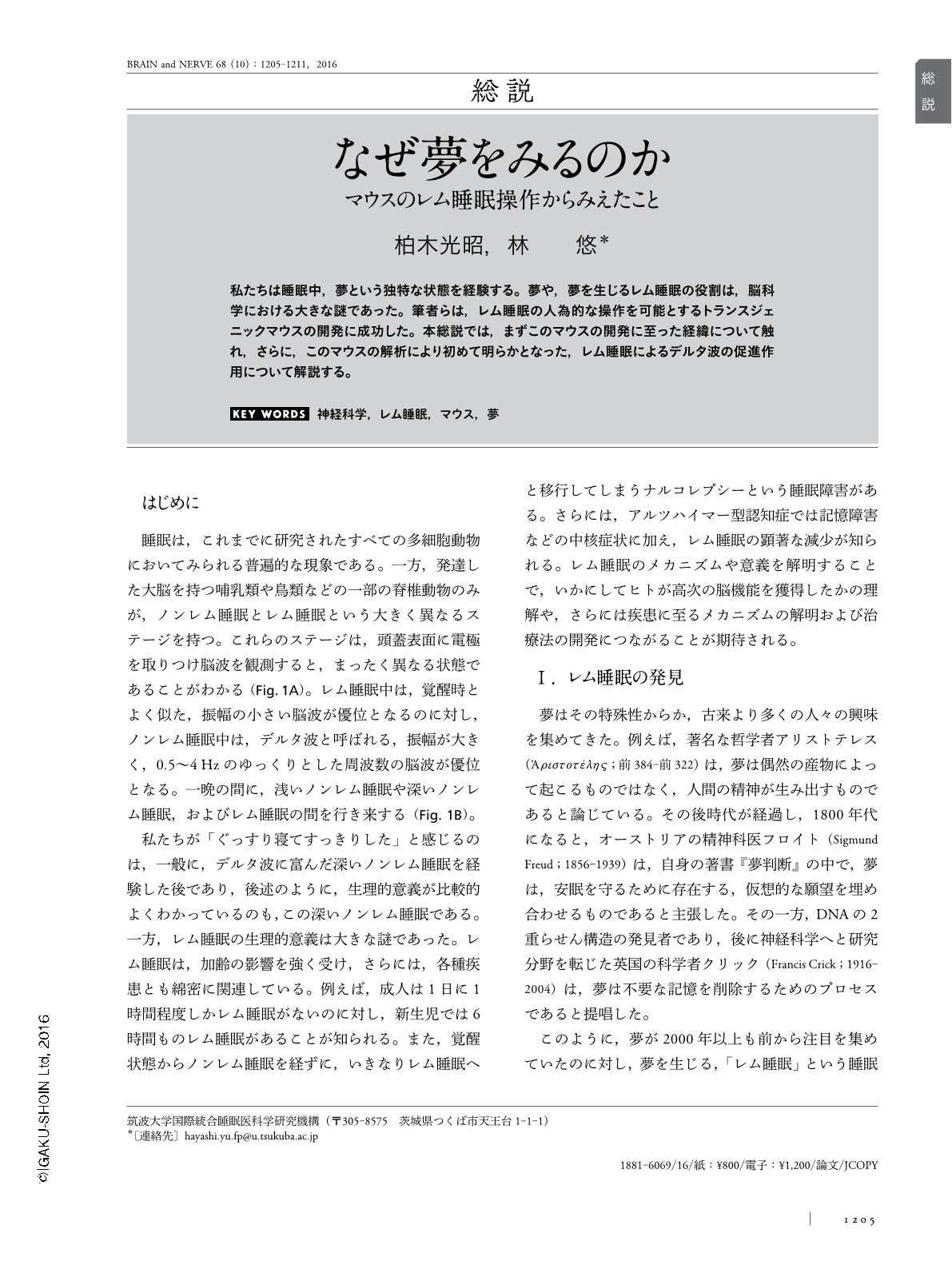Japanese
English
- 有料閲覧
- Abstract 文献概要
- 1ページ目 Look Inside
- 参考文献 Reference
私たちは睡眠中,夢という独特な状態を経験する。夢や,夢を生じるレム睡眠の役割は,脳科学における大きな謎であった。筆者らは,レム睡眠の人為的な操作を可能とするトランスジェニックマウスの開発に成功した。本総説では,まずこのマウスの開発に至った経緯について触れ,さらに,このマウスの解析により初めて明らかとなった,レム睡眠によるデルタ波の促進作用について解説する。
Abstract
Our sleep is composed of rapid eye movement (REM) sleep and non-REM (NREM) sleep. REM sleep is the major source of dreams, whereas synchronous cortical oscillations, called slow waves, are observed during NREM sleep. Both stages are unique to certain vertebrate species, and therefore, REM and NREM sleep are thought to be involved in higher-order brain functions. While several studies have revealed the importance of NREM sleep in growth hormone secretion, memory consolidation and brain metabolite clearance, the functions of REM sleep are currently almost totally unknown. REM sleep functions cannot be easily indicated from classical REM sleep deprivation experiments, where animals are forced to wake up whenever they enter REM sleep, because such experiments produce extreme stress due to the stimuli and because REM sleep is under strong homeostatic regulation. To overcome these issues, we developed a novel transgenic mouse model in which REM sleep can be manipulated. Using these mice, we found that REM sleep enhances slow wave activity during the subsequent NREM sleep. Slow wave activity is known to contribute to memory consolidation and synaptic plasticity. Thus, REM sleep might be involved in higher-order brain functions through its role in enhancing slow wave activity.

Copyright © 2016, Igaku-Shoin Ltd. All rights reserved.


